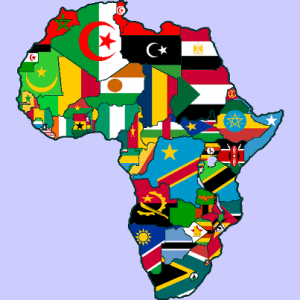By Mbatau wa Ngai
The economic benefits to be derived from intra-Africa trade are so huge that Kenyan and Nigerian leaders ideally require no persuasion to set the ball rolling.
A good place to start may be placing before the Japanese-Africa Trade and Investment Conference scheduled to be held later this year in Nairobi proposals on the construction of a road and, later, a rail line linking the Indian Ocean to the Atlantic Ocean countries.
 The ambitious highway would run from the Kenyan port of Mombasa to Lagos and pass through Uganda, Democratic Republic of Congo (DRC), Central Africa Republic (CAR), Cameroon before reaching the Nigerian port city of Lagos.
The ambitious highway would run from the Kenyan port of Mombasa to Lagos and pass through Uganda, Democratic Republic of Congo (DRC), Central Africa Republic (CAR), Cameroon before reaching the Nigerian port city of Lagos.This would encourage the turning of markets in these countries, and the two major economic blocks they are part of, into domestic ones of close to 500 million people. The project’s would-be critics—and there would be many– may need reminding that this was one of the dreams espoused by African post-independence leaders at the first Pan-African Congress held in Accra-Ghana in 1958.
However, this was scuttled soon after by self-seekers bent on keeping the exploitative taps between Africa and their countries’ economies running. The result is plain for all who have eyes to see.
And were truth to be told, the division of Africa into countries with minuscule populations was but one of the weapons used against the continent and its people way back in 1888 at the infamous Berlin Conference.
The palpable drawing together of the two regions’ economies as witnessed during the recent Nigerian President Muhammadu Buhari visit to Kenya is but a work-in-progress against this background and the forces that seek to keep African economies weak for their own continued benefit. Understandably, the two key drivers—Kenya and Nigeria—will need to suspend the business —as- usual—way of doing business before they, and their entire regions –can get from where they are currently to where they intend to be in future.
And although the two heads of State mandated the private sector to set up and run structures to begin doing business even before the signing of the planned memorandums of understanding, there are some key issues worth considering.
Admittedly, Kenyan leaders are making all the right noises on how the country will increase its food production and create a competitive manufacturing sector. But evidence on the ground suggests that the planned legislative and tax policies are not only moving at a snail’s pace but may be working at cross purposes.
There are increasing doubts, for example, whether the much-hyped fertiliser subsidies are reaching the people they are intended for and whether they are raising productivity on the small-holder farms as expected. Perhaps, there is a need to go back on the drawing board and come up with more comprehensive plans which may include the training and hiring of more extension agricultural and veterinary officers and soil testing before recommending use of in-puts.
The fact that this may require the county bosses to climb down from their high horses from where they demand increased functions and funding while resisting closer accountability should not discourage the national government from pursuing this course. After all, both levels of government claim to serve the same people.
The government may also need to reconsider Industrialisation Cabinet Secretary Adan Mohamed’s offer to half the price of energy to prospective investors in the proposed Naivasha Industrial Park. While this would increase the country’s competitiveness and bring it closer to Ethiopia and Egypt, there may be need to ensure equity for all manufacturers especially in view of the fact that the prospective Naivasha manufacturers would be allowed to sell their goods locally and regionally.
The solution may be to find a way of reducing the energy cost to all manufacturers by reducing or dropping the myriad of taxes added to the customers’ bills. There may also be need for the national and county governments to do more to re-align their taxation policies, including the number and actual amounts charged.
Mbatau wa Ngai
Email: [email protected]
Source: Standard Digital


